Servings
2Prep
30 minCook
3 hrBraised Short Ribs
- 2lbs beef short ribs, bone in
- 1/2 onion, chopped
- 2-3 stalks celery, chopped
- 2 medium or 6oz of baby carrots carrot, chopped
- 1 head garlic
- 2 tablespoon tomato paste
- as needed cooking oil
- 3/4 a bottle red wine
- 24 oz beef broth, salted
- 3 sprigs thyme
- 3 sprigs rosemary
- as needed salt and pepper
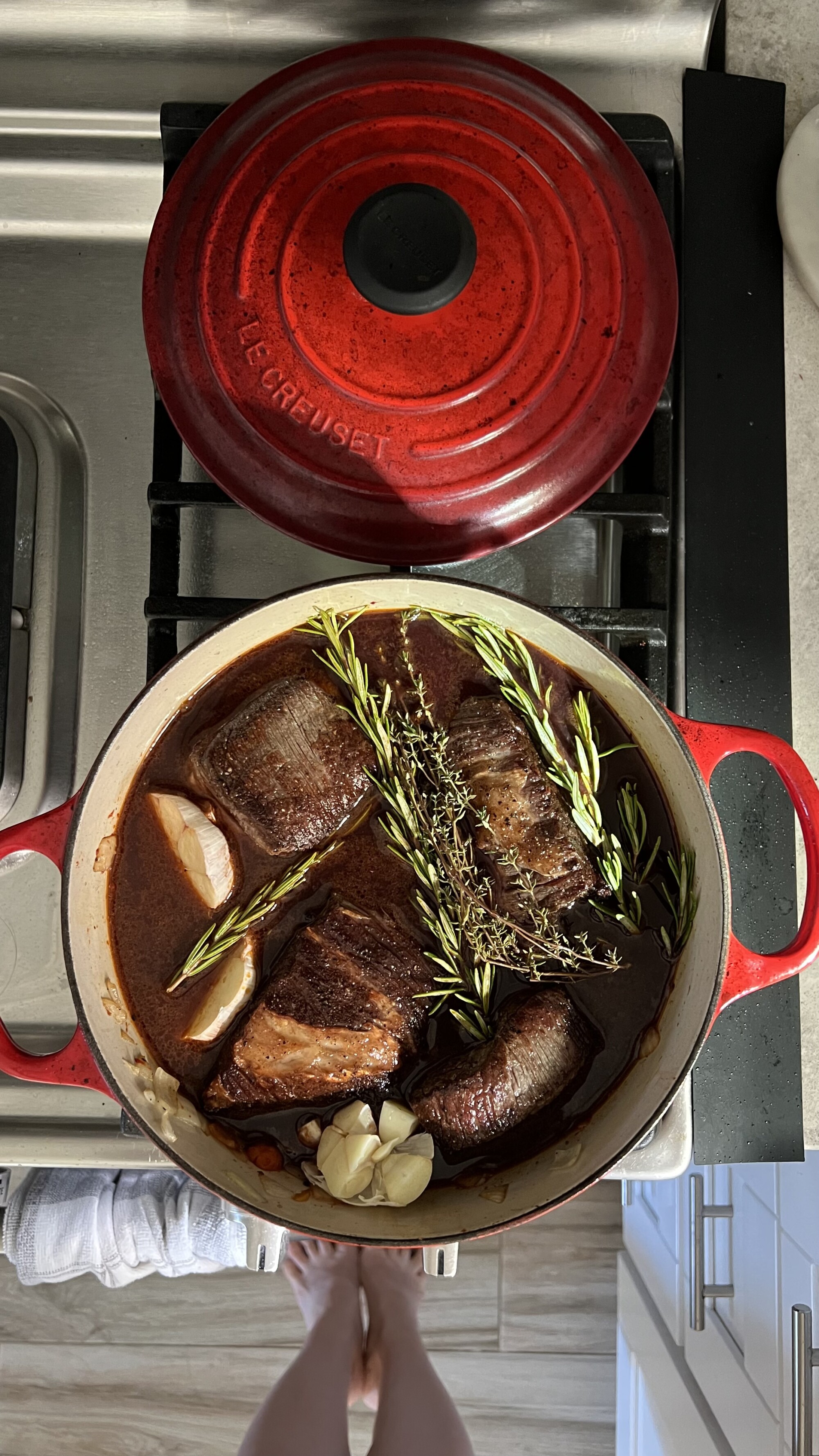
I might have mentioned this before but a while back Jimmy and I went in on purchasing half of a cow. We wanted to cut the trips to the grocery store and have access to all different types of cuts. This resulted in the welcomed challenge of trying to make things we typically don’t, like short rib. I’ll be honest, at home we typically eat very simply. A good ribeye or NY strip and some veggies is a solid weeknight meal.
The short rib was always eyeing me from the freezer though. If short rib is on a menu anywhere, it’s usually my go-to. The first time I made it though I realized how easy it actually is to make – as long you have the time. I have seen a lot of Instant Pot recipes online (and tried a couple), and I can see the appeal of trying to speed up the process. I personally think baby back ribs are better suited for the Instant Pot. If you want that restaurant style, fall-off-the-bone, short rib though you’re best braising it. Braising just means you will sear the meat before letting it slow cook in a stew until fork tender. What I love about this dish is that it feels fancy, but it’s really a one-pot type of meal. It’s chef’s kiss, perfection.
Things to note ahead of time:
- Do not rush a braise! If you’re going to invest the hours to let this slow cook, don’t rush it in the last hour. The steps are simple: Prep your vegetables, sear your meat, throw everything in the pot and wait. When the meat is done you can take it out and reduce down the sauce. I’ve made this in a rush and the sauce is okay if not fully reduced, but that thick reduction is truly amazing.
- Making this dish for more than 4 people? Don’t overcrowd the pan. Overcrowding can result in the overall pan temp going down, allowing for moisture to escape and making the meat soggy rather than getting that perfect crust. If you’re making this dish for more than 4, take the time to sear it in batches.
- Like to prep ahead of time? You can chop the veggies and sear the meat the night before!
- A sieve makes all the difference! All the veggies will get cooked down and pushed through a fine sieve at the end to add that liquid gold flavor to the sauce. Don’t sleep on this step, this will get you to restaurant-level goodness.
- Start by roughly chopping your vegetables and setting them aside. This is a classic mirepoix base commonly found in stews. While the traditional ratio is around 2:1:1 (onion:celery:carrots) it doesn’t have to be exact, so if you have 1/4 onion vs a 1/2, life will go on. Roughly 1/2 large brown onion, 2 celery stalks, 2 medium-sized carrots (or half a small 12 oz bag of baby carrots).
- Chop your head of garlic width-wise so that you’re exposing each clove. No need to remove the skin, this will be strained out later.
- Rinse and dry off the short ribs. Be sure your ribs aren’t wet as they’ll be going into hot oil and will cause much more splatter if wet. Your ribs might come pre-portioned. If it comes intact with the bones still connected by the meat, go ahead and portion each rib separately. Start by using a sharp knife and cut between the bone. Season all sides of each rib with a generous amount of salt and pepper.
- Preheat the oven to 350˚F
- Heat a dutch oven or large oven-safe pot on the stove on high heat, once the oil is hot and ready to go, gently place one rib in at a time, careful not to overcrowd the pot. Sear each side until you have a deep brown crust (2-4 minutes each side). Set the meat aside when all pieces have formed a nice crust.
- In the same pot add a little more oil if needed (some ribs might render down some of the fat from the ribs and won’t require any additional cooking fat). Pour in the mirepoix mix and cook down until the onions are soft and a little translucent.
- Add 1-2 tablespoons of tomato paste to your pot. I like to use paste from a tube so just a good hearty squeeze, then mix evenly with a wooden spoon or spatula.
- Throw in the garlic and fresh herbs. I use rosemary and thyme because that’s what I have in the garden right now, but you could also add oregano.
- Place the meat back into the pot.
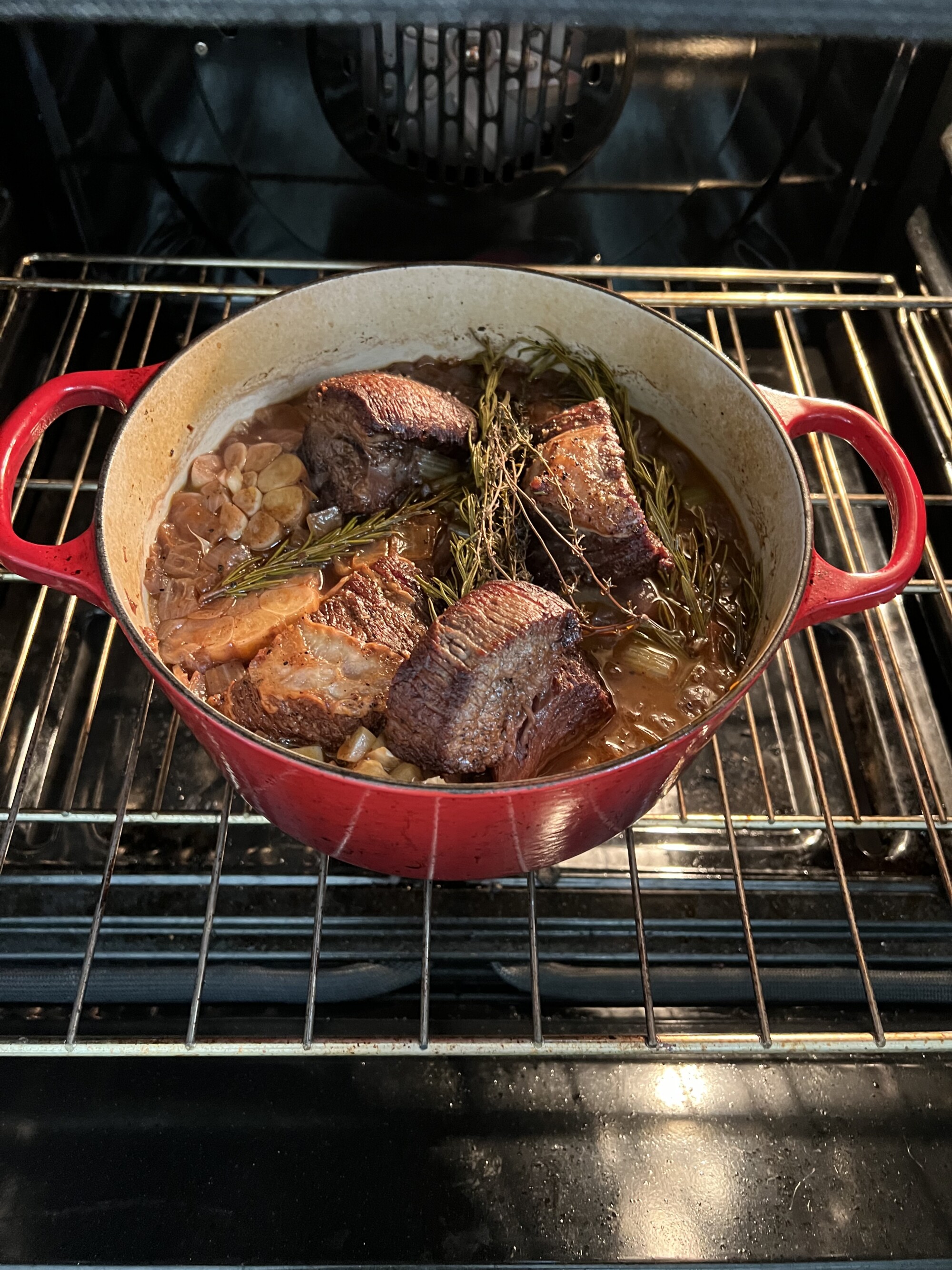
- Pour in about 3/4 of a bottle of red wine. A dry red works best here but I always have a random bottle laying around so use what you have. Pour in 24oz of beef broth. You want everything nearly covered so adjust accordingly to the size of your pot. I’ve tried this a few different ways and have found that the more wine to broth, the faster the sauce reduces down later. With this ratio, I would check on the stew periodically to ensure it doesn’t reduce down too quickly. If you don’t have 3/4 of a bottle of wine, no problem! Just give yourself 30 more minutes in the end to reduce the sauce.
- Cover the pot with a lid and place it in the oven for the next 3 hours. If you played around with the liquid ratios, check the pot every hour or two to see how it’s reducing – you can always add more broth if it’s thickening up too quickly.
- When done, gently remove the meat from the pot and set it aside. Using tin foil make a tent to keep in the heat.
- Pour the remaining stewing liquid through a fine sieve into a bowl. You’ll be left with all the veggies and herbs in the sieve. Using the back of a metal or wooden spoon, push the soft veggies and garlic through the sieve and into the bowl. Use the spoon to scrape off the thick pressed juice from the bottom of the sieve, this burst of flavor is liquid gold and key to an amazing sauce. This is a great time to taste and add additional salt and pepper to your preference. If you want to thicken up your sauce you can pour it back into the pot on low heat until it reduces down.
- These pair great with mashed potatoes or rice and your veggie of choice; ours is broccolini! Spoon on the sauce and enjoy!
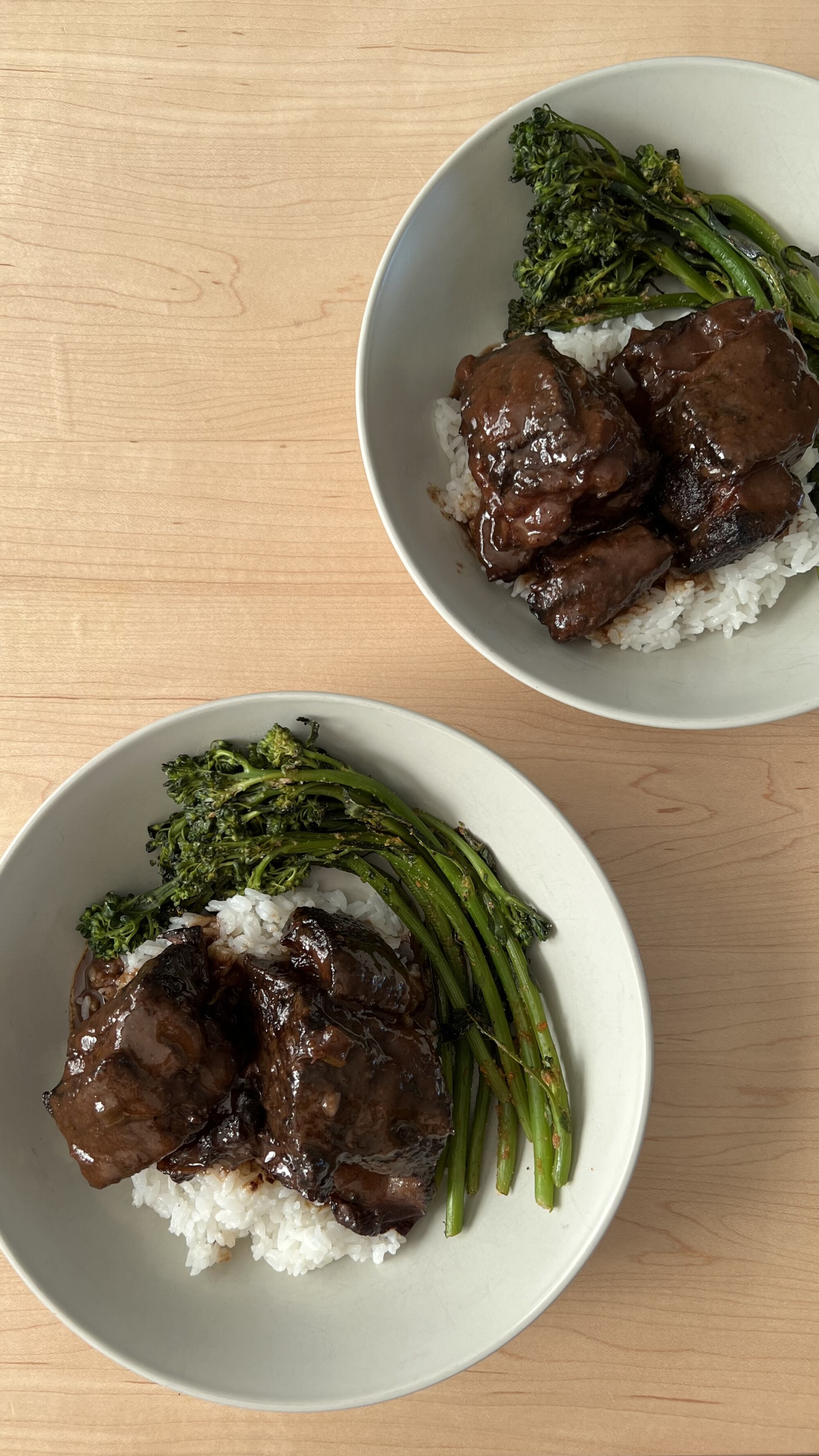
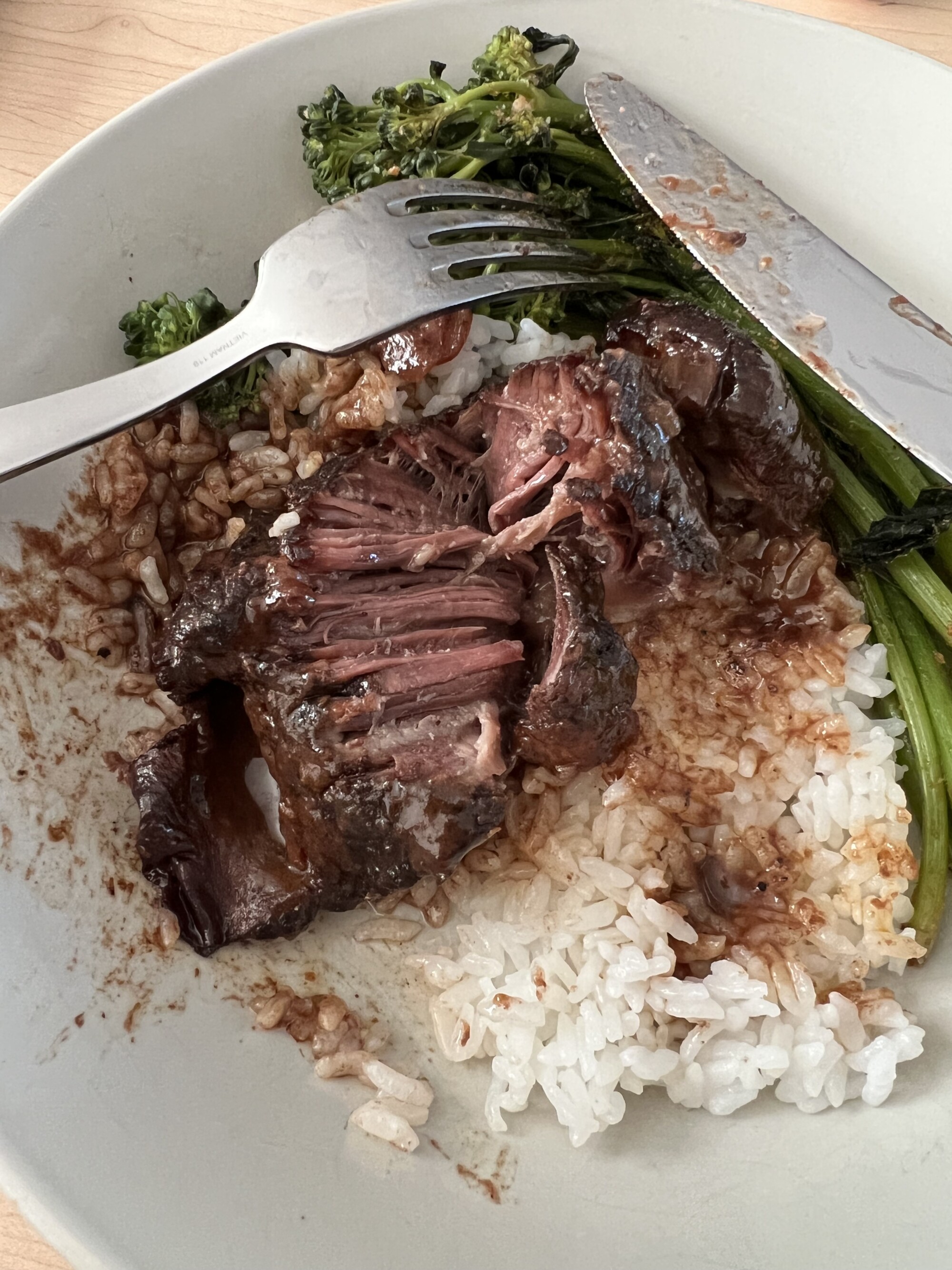
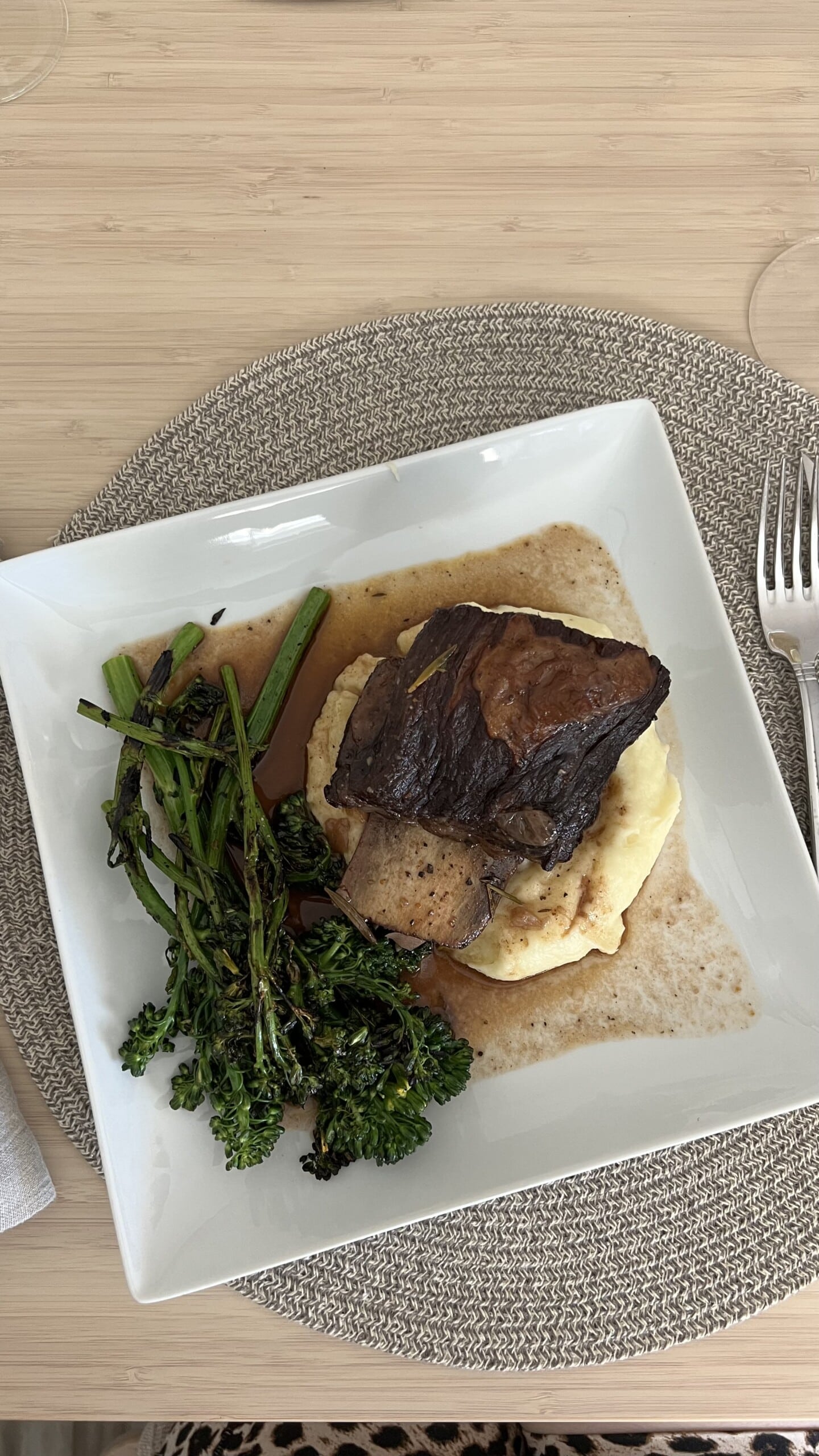

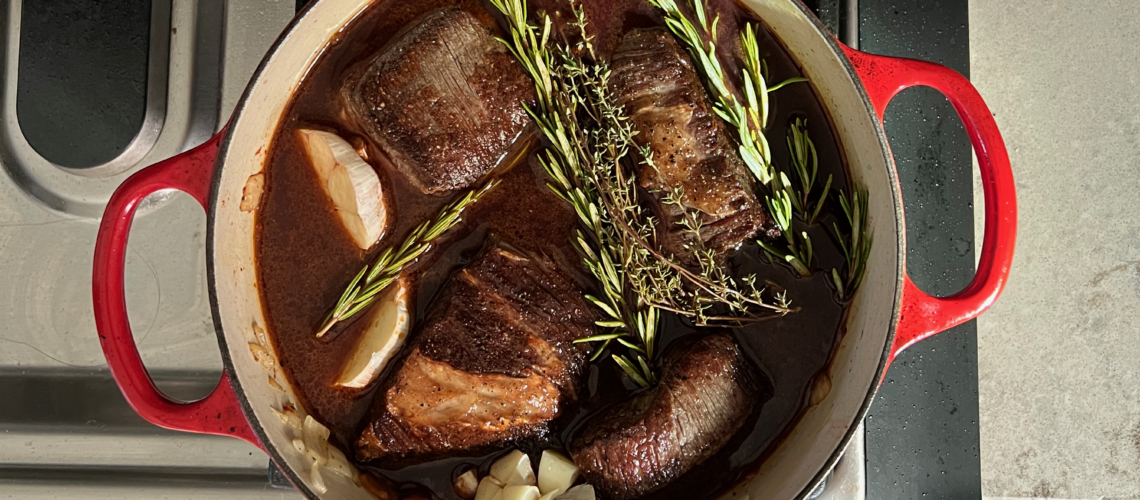
 5-Minute Spicy Cold Tofu
5-Minute Spicy Cold Tofu




No Comments